Introduction to Fashion Design Software
The fashion industry has long been a fusion of creativity and technology, with each era marked by advancements that redefine the way garments are designed, produced, and consumed. The evolution of fashion design software is a testament to this, transforming the landscape from traditional hand-sketching and manual pattern-making to sophisticated digital tools that offer precision, speed, and endless creative possibilities.
The journey of fashion design software began in the 1980s, a period marked by the advent of computer-aided design (CAD) systems. Initially, these tools were adapted from the architecture and engineering sectors, with programs like AutoCAD being repurposed for garment design. The early 1990s saw the emergence of specialized fashion design software tailored specifically for the fashion industry, such as Gerber AccuMark (1988) and Lectra Modaris (1992). These tools revolutionized pattern-making, grading, and marker-making, allowing designers and manufacturers to optimize fabric usage and streamline production processes.
As the fashion industry embraced digital transformation, the 2000s introduced more advanced and user-friendly software. Initially released in 1987, Adobe Illustrator became a staple for fashion designers, offering unparalleled vector graphics capabilities for creating detailed sketches and technical drawings. In parallel, 3D fashion design software, such as CLO 3D and Browzwear’s VStitcher, began to emerge, allowing designers to create, visualize, and modify garments in a virtual environment, thus reducing the need for physical prototypes.
Today, fashion design software is an essential tool for designers, manufacturers, and retailers alike. The global fashion design software market was valued at approximately $1.8 billion in 2020 and is expected to grow at a compound annual growth rate (CAGR) of 5.9% from 2021 to 2028. This growth is driven by the increasing demand for 3D design tools, the rise of fast fashion, and the need for sustainable and efficient design processes.
Let us now look at 10 10 Best Fashion Design Software for Fashion Designers, with their unique features, specialised tools, integrations and cost etc.
1. Adobe Illustrator
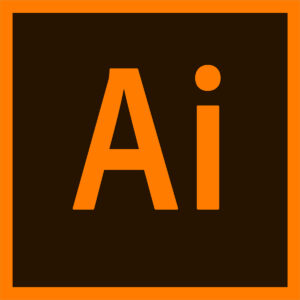
About: Adobe Illustrator is vector graphics software widely used in fashion design to create detailed sketches, technical flats, and digital illustrations. It is essential for designing apparel, accessories, and textiles. The software is ideal for fashion designers, graphic designers, students, and professionals working in the fashion and apparel industries.
Features: Illustrator allows for precise control over shapes, lines, and curves, making it perfect for detailed fashion sketches and technical drawings. Designers can work with multiple layers to manage different design elements, such as stitching, patterns, and colors. Offers high precision for creating custom paths, crucial for detailed design work.
Specialized Tools: Illustrator provides tools to create and apply patterns to garments, including repeating motifs and fabric designs. The software supports Pantone colors and offers advanced color management tools for ensuring accurate color reproduction.
Integrations: Seamless integration with Adobe Photoshop for texture creation and Adobe InDesign for lookbooks and presentations. Supports import and export of files in multiple formats like .AI, .PDF, .SVG, and more.
Ease of Use: Adobe Illustrator has a professional-grade interface that may have a learning curve for beginners, but it offers extensive control and precision for experienced users. Adobe provides numerous tutorials, user guides, and a large community forum. Many third-party tutorials are also available online.
Compatibility: Adobe Illustrator is available on both Windows and macOS. It runs efficiently on standard modern computers but performs best on machines with higher RAM and a good graphics processor. It supports a wide range of file formats, including AI, EPS, PDF, SVG, DXF, and more.
Cost: Adobe Illustrator is available via subscription through Adobe Creative Cloud. Pricing starts at around $20.99/month as a standalone app, with options for annual subscriptions or as part of the Adobe Creative Cloud suite. Adobe offers a 7-day free trial for users to test the software.
Advantages:
- Industry-standard software with a wide range of tools for precise vector design.
- Highly customizable with various plugins and integrations.
- It supports complex and detailed designs with scalability, making it ideal for both print and digital fashion assets.
Limitations:
- Steep learning curve for beginners.
- Requires a subscription, which may be costly for students or hobbyists.
- Not specifically tailored to fashion design, so some tasks (like pattern grading) may require additional software.
Support & Updates: Adobe offers robust customer support, including live chat, phone support, and a detailed help center. There’s also a large online community and forums for peer support. Adobe regularly updates Illustrator with new features and improvements included in the subscription.
2. CLO 3D
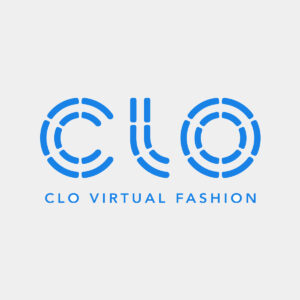
About: CLO 3D is a 3D garment visualization software that allows fashion designers to create, simulate, and visualize garments in a realistic 3D environment. It’s used for design development, fitting, and virtual prototyping. Professional fashion designers, pattern makers, and product developers in the fashion and apparel industries.
Features: Create and simulate garments on 3D avatars with realistic fabric behavior, drape, and movement. Integrates 2D pattern design with 3D visualization, allowing designers to see real-time changes. Customize avatars to match body measurements, ensuring accurate fitting and design adjustments.
Specialized Tools: Extensive library of fabrics with customizable properties like thickness, stretch, and weight. Create animations of garments in motion and render high-quality images for presentations.
Integrations: Supports import/export of various file formats, including .DXF, .OBJ, and .AI, allowing integration with other design and CAD software.
Ease of Use: CLO 3D has an intuitive interface but may require some learning for users new to 3D design.
Learning Resources: Offers tutorials, webinars, and an active user community for support.
Compatibility: CLO #D is available on Windows and macOS. Requires a high-performance computer with a good graphics processor for smooth operation. Supports .DXF, .AI, .OBJ, and other industry-standard formats.
Cost: It is subscription-based, with pricing starting around $50/month, depending on the plan. Educational licenses are available. It offers a 30-day free trial for new users.
Advantages:
- Realistic 3D garment simulation and fitting.
- Reduces the need for physical samples, saving time and resources.
- Strong pattern-making and fabric simulation tools.
Limitations:
- Requires a powerful computer to run smoothly.
- Can have a steep learning curve for those new to 3D modeling.
- Subscription cost can be high for freelancers or small studios.
Support & Updates: Offers robust support through online help, forums, and dedicated customer service. Regular updates are provided, improving features and adding new tools.
3. TUKAcad

About: TUKAcad is a pattern-making software used in the fashion industry for drafting, grading, and marker making. It is known for its precision in creating production-ready patterns. Professional pattern makers, fashion designers, and manufacturers.
Features: Tools for creating precise patterns from scratch or modifying existing ones. Automated grading tools to create size ranges efficiently. Optimizes fabric usage by creating efficient markers for cutting.
Specialized Tools: This tool allows users to visualize patterns on a 3D avatar to check fit and drape. It also maximizes fabric efficiency with advanced nesting algorithms.
Integrations: Integrates with digital cutting machines and other CAD software, supporting file formats like .DXF.
Ease of Use: Designed for professionals, it offers a range of tools that may require training to master.
Learning Resources: Provide training sessions, online tutorials, and customer support.
Compatibility: Available on Windows. Runs efficiently on standard industry hardware. Supports.DXF, .PLT, and other industry-standard formats.
Cost: Licenses are typically purchased outright, with additional costs for updates and support. A limited time is available to evaluate the software.
Advantages:
- High precision in pattern drafting and grading.
- Supports complex pattern-making tasks and large-scale production.
- Strong customer support and training resources.
Limitations:
- Primarily focused on pattern making, so it lacks tools for sketching or 3D visualization.
- Learning curve can be steep for beginners.
Support & Updates: Offers technical support, training sessions, and online resources. Periodic updates are available, often requiring a maintenance fee.
4. Browzwear (VStitcher & Lotta)
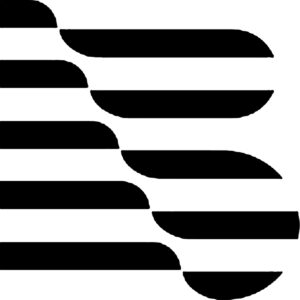
About: Browzwear’s VStitcher and Lotta are 3D fashion design software used for creating, developing, and visualizing garments. VStitcher is more advanced and used for the entire garment lifecycle, while Lotta focuses on creative design: professional fashion designers, technical designers, and product developers in the fashion industry.
Features: Allows designers to create and visualize garments in 3D, from initial sketch to final product. Integrates 2D patterns with 3D garment visualization for accurate fit and design development. Realistic simulation of fabrics, including stretch, drape, and texture.
Specialized Tools: Check garment fit on different body sizes and shapes. Manages digital assets, including fabrics, trims, and designs, across different teams.
Integrations: Integrates with PLM systems, CAD software, and other design tools like Adobe Illustrator and Photoshop.
Ease of Use: Advanced software with a learning curve, especially for those new to 3D design, but highly powerful for experienced users. Comprehensive training resources, webinars, and an active user community.
Compatibility: It is available on Windows and macOS. It requires a high-performance computer with a good graphics processor for smooth operation. It supports DXF, OBJ, VSG, and other industry-standard formats.
Cost: Enterprise-level pricing typically requires a custom quote based on the number of licenses and services needed. It is available upon request for evaluation purposes.
Advantages:
- High-quality 3D garment visualization and simulation.
- Strong integration with pattern-making and PLM systems.
- Reduces time-to-market by enabling virtual sampling and fitting.
Limitations:
- High cost, which may not be feasible for smaller companies or freelancers.
- Requires significant hardware and software investment.
- Steep learning curve for new users.
Support & Updates: This service offers dedicated customer support, including training, webinars, and technical assistance. It also regularly updates its customers with new features and enhancements.
5. Marvelous Designer

About: Marvelous Designer is a 3D modeling software that specializes in creating realistic digital garments. It’s widely used in fashion design, game development, and animation for creating detailed clothing simulations. Fashion designers, costume designers, 3D artists, and animators.
Features: Allows users to create and simulate garments in 3D with realistic fabric draping and movement. Supports pattern-based garment design, allowing for accurate construction and fitting. Real-time garment simulation with high-quality rendering for realistic fabric behavior.
Specialized Tools: Create garment animations to visualize movement and fit during motion. Adjust fabric properties like elasticity, weight, and thickness for accurate simulation.
Integrations: It integrates with other 3D software, such as Autodesk Maya, 3ds Max, and ZBrush. It also supports file formats like.OBJ and .FBX for seamless workflow.
Ease of Use: User-friendly interface with a focus on pattern-based design, but may require some learning for users new to 3D modeling. Offers extensive tutorials, a knowledge base, and a strong community forum.
Compatibility: Available on Windows and macOS. It requires a powerful computer with a good graphics processor to handle complex simulations. It supports OBJ, FBX, DXF, and other 3D file formats.
Cost: Available through subscription or perpetual license, with pricing starting around $50/month. Offers a 30-day free trial for evaluation.
Advantages:
- Highly realistic fabric simulation and garment creation.
- Widely used in both fashion design and digital content creation industries.
- Strong pattern-making tools with real-time simulation.
Limitations:
- Primarily focused on garment simulation, so it may not be a comprehensive solution for all fashion design needs.
- Requires a strong understanding of 3D modeling and simulation.
- Subscription cost may be high for some users.
Support & Updates: Provides technical support, tutorials, and an active user community. Regular updates with new features and improvements.
6. CorelDRAW
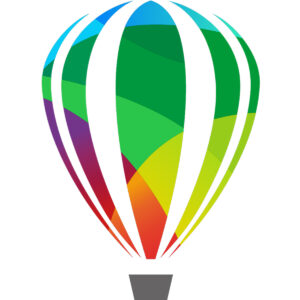
About: CorelDRAW is a graphic design software used for vector illustration, layout, and design. It is popular in fashion design for creating technical flats, fashion illustrations, and print designs. Fashion designers, graphic designers, and illustrators.
Features: Powerful vector editing tools for creating detailed fashion illustrations and technical drawings. Advanced typography tools for creating text-based designs and labels. Supports multi-page layout and design, ideal for creating lookbooks and presentation boards.
Specialized Tools: Allows for creating and applying custom patterns to garments. Advanced color tools for ensuring accurate color representation and consistency.
Integrations: Integrates with other Corel products and supports a wide range of file formats, including .AI, .PDF, and .SVG.
Ease of Use: Intuitive interface with customizable workspaces, suitable for both beginners and professionals. Offers tutorials, webinars, and an active user community for support.
Compatibility: Available on Windows and macOS. Runs efficiently on standard modern computers. Supports a wide range of file formats, including .AI, .PDF, .SVG, .EPS, and more.
Cost: Available as a one-time purchase or through a subscription plan. Pricing starts at around $249/year for a subscription. Offers a 15-day free trial.
Advantages:
- Versatile design tools suitable for a wide range of fashion design tasks.
- Cost-effective compared to some other professional design software.
- Strong community support and resources.
Limitations:
- Not as widely used in the fashion industry as Adobe Illustrator.
- Some advanced features may be less intuitive compared to Adobe products.
- Lacks specific tools for pattern making and 3D garment design.
Support & Updates: Offers technical support, a knowledge base, and an active online community. Regular updates with new features and enhancements.
7. Gerber AccuMark
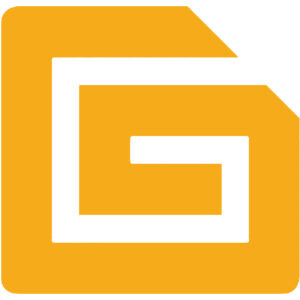
About: Gerber AccuMark is an industry-standard software for pattern design, grading, and marker making. It is widely used in apparel manufacturing for creating production-ready patterns. Professional pattern makers, fashion designers, and manufacturers.
Features: Advanced tools for creating and modifying patterns with precision. Automated grading tools to efficiently create size ranges for production. Optimizes fabric usage by generating efficient markers for cutting.
Specialized Tools: Integrated 3D tools to visualize patterns on virtual models and check fit. Maximizes fabric efficiency with powerful nesting algorithms.
Integrations: Integrates with Gerber’s suite of tools, including YuniquePLM, and supports file formats like .DXF.
Ease of Use: Designed for professionals with a focus on accuracy and efficiency; may require training to master. Provides training sessions, online resources, and customer support.
Compatibility: Available on Windows. Runs efficiently on standard industry hardware. Supports .DXF, .PLT, .VTX, and other industry-standard formats.
Cost: Licenses are typically purchased outright, with additional costs for updates and support. Available for a limited time to evaluate the software.
Advantages:
- Highly accurate pattern drafting and grading tools.
- Strong support for large-scale production and manufacturing workflows.
- Well-integrated with other Gerber products for a complete solution.
Limitations:
- Primarily focused on pattern making, so additional software may be needed for design or 3D visualization.
- High cost and complex interface may be challenging for smaller companies or freelancers.
Support & Updates: Offers comprehensive support, including training, technical assistance, and online resources. Regular updates available, often requiring a maintenance fee.
8. Lectra Modaris
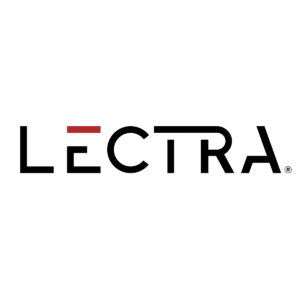
About: Lectra Modaris is a leading pattern design, grading, and 3D prototyping software used in the fashion and apparel industry. It helps designers and pattern makers streamline their workflows from concept to production. Professional pattern makers, fashion designers, and apparel manufacturers.
Features: Tools for creating, modifying, and grading patterns with high precision. 3D simulation of garments to visualize fit, drape, and design before production. Efficient grading tools for creating size ranges quickly.
Specialized Tools: Realistic simulation of fabric behavior to assess garment performance. Tools for managing complex patterns and ensuring consistency across sizes.
Integrations: Integrates with Lectra’s PLM solutions and other CAD software. Supports standard file formats like .DXF.
Ease of Use: Professional-grade interface designed for precision and efficiency; may require specialized training. Offers training programs, webinars, and technical support for users.
Compatibility: Available on Windows. Runs on standard industry hardware, with recommendations for high-performance systems for 3D simulation. Supports .DXF, .PLT, .MOD, and other industry-standard formats.
Cost: Enterprise-level pricing, usually requiring a custom quote based on the number of licenses and services needed. Available upon request for evaluation purposes.
Advantages:
- Comprehensive tools for pattern design, grading, and 3D prototyping.
- Strong integration with other Lectra products and PLM systems.
- Accurate fabric simulation and advanced grading tools.
Limitations:
- High cost, making it more suitable for large companies or manufacturers.
- Steep learning curve and complex interface.
- Requires significant investment in both software and training.
Support & Updates: Provides dedicated support, training, and access to online resources. Regular updates with new features and improvements.
9. Procreate
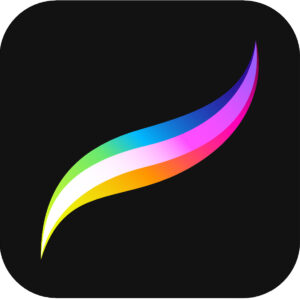
About: Procreate is a digital illustration app for iPad, popular among fashion illustrators for sketching, drawing, and creating detailed fashion illustrations and concept art. Fashion illustrators, designers, and artists.
Features: Extensive brush library with customizable options for different textures and effects. Advanced layer controls for complex illustrations and designs. Tools for precise sketching, inking, and coloring.
Specialized Tools: Automatically corrects shapes to create perfect lines and forms. Basic tools for creating simple animations and motion effects.
Integration: Supports file formats like .PSD, .TIFF, and .PNG, allowing easy integration with other design software.
Ease of Use: Intuitive interface designed for touch input on the iPad, making it accessible and easy to learn. Offers tutorials, an active online community, and various user-generated resources.
Compatibility: Exclusive to iPad (iOS).Requires an iPad, ideally with an Apple Pencil for precise drawing. Supports .PSD, .TIFF, .PNG, .JPEG, and other standard image formats.
Cost: One-time purchase with a price of around $9.99 on the App Store. No free trial, but the cost is minimal compared to other professional software.
Advantages:
- Highly affordable with professional-grade illustration tools.
- Portable and easy to use with the iPad and Apple Pencil.
- Extensive brush customization and layer management.
Limitations:
- Limited to iPad, which may not suit all workflows.
- Lacks specific fashion design tools like pattern making or 3D visualization.
- Not ideal for complex vector-based designs or large-format work.
Support & Updates: Offers technical support, a knowledge base, and access to an active online community. Regular updates with new features and enhancements.
10. Digital Fashion Pro
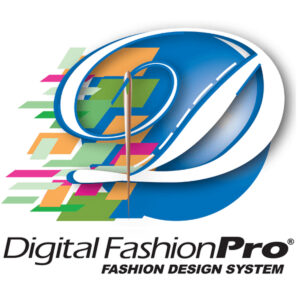
About: Digital Fashion Pro is a fashion design software that provides tools for sketching, designing, and creating tech packs. It is aimed at designers who want to create professional fashion designs without extensive graphic design skills. Aspiring fashion designers, small business owners, and fashion entrepreneurs.
Features: Includes a library of templates for designing various types of garments. Pre-loaded libraries with various fabrics, textures, and prints. Tools for creating professional tech packs for manufacturers.
Specialized Tools: Easy-to-use interface for combining templates, fabrics, and designs. Tools for customizing colors, fabrics, and design elements.
Integrations: Limited integration capabilities; focuses on self-contained design and tech pack creation.
Ease of Use: Designed for ease of use, even for those without extensive design experience. Offers video tutorials, online resources, and customer support for beginners.
Compatibility: Available on Windows and macOS. Runs on standard modern computers. Limited file export options, primarily focused on internal use and tech pack creation.
Cost: Available as a one-time purchase, with prices starting around $199 for the basic version. No free trial available, but the software offers a money-back guarantee.
Advantages:
- User-friendly interface with pre-made templates and tools.
- Suitable for beginners and small businesses.
- Cost-effective compared to more complex design software.
Limitations:
- Limited in terms of advanced design capabilities and file export options.
- Not suitable for professional-grade design or complex pattern making.
- Lacks 3D visualization or advanced illustration tools.
Support & Updates: Offers support via email, tutorials, and an online knowledge base. Periodic updates with new templates and features.
Conclusion
As the fashion industry continues to evolve, so too does the fashion design software that powers it. From the early days of CAD systems to the sophisticated 3D design tools of today, fashion design software has become indispensable in creating garments that are not only aesthetically pleasing but also efficiently produced and environmentally conscious. Whether you’re an aspiring designer, a seasoned professional, or a fashion entrepreneur, understanding and utilizing the best software available is crucial in staying competitive in this ever-changing industry. The future of fashion design lies in the seamless integration of creativity and technology, and those who embrace these tools will undoubtedly lead the way in shaping the trends and innovations of tomorrow.
Do you think I should include more software here? Please share your experience with using software for fashion design and let us know how you benefit from them. Also, write in comments how you think this blog post has helped you.


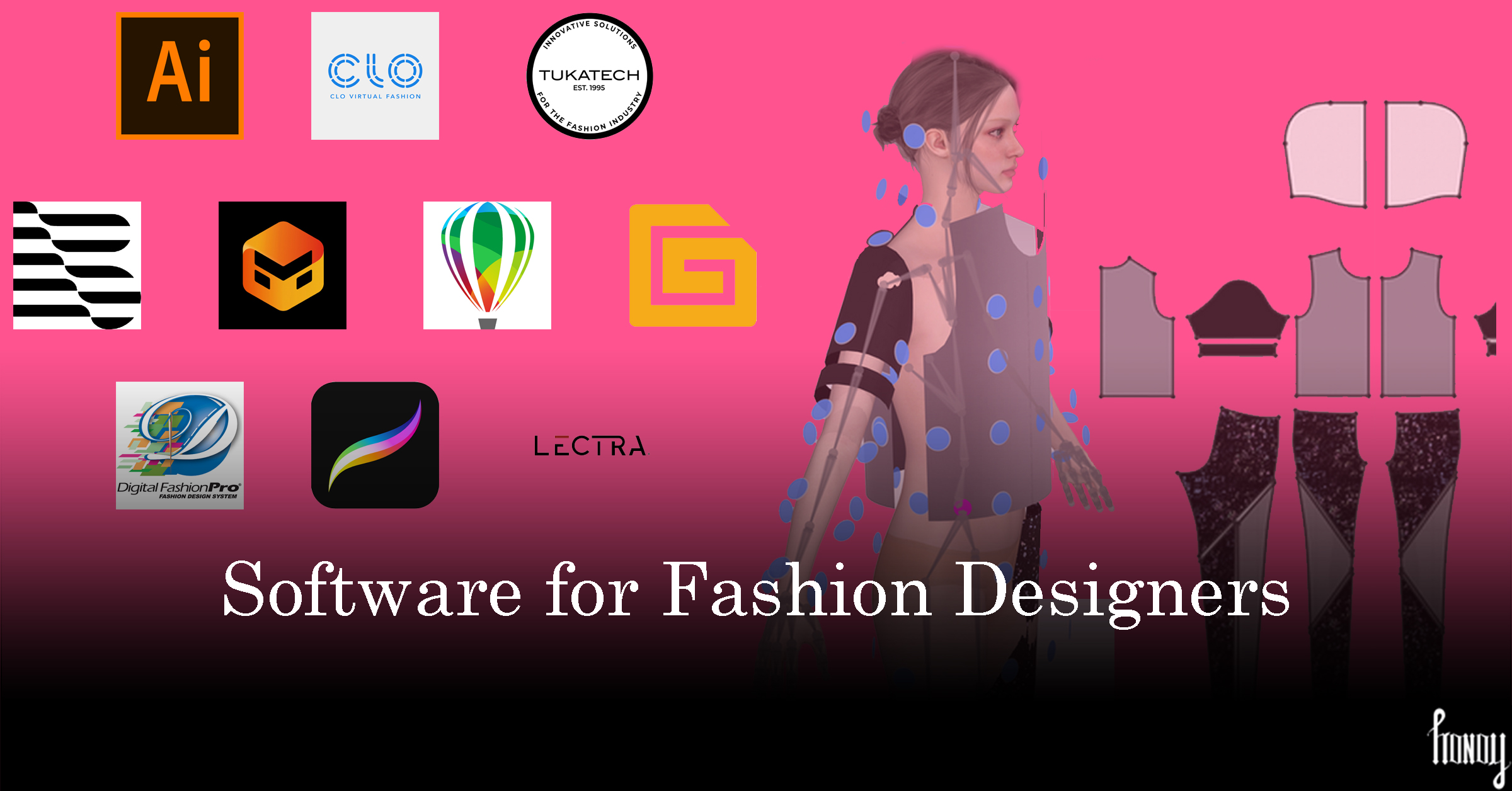








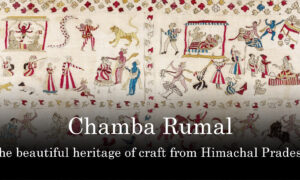







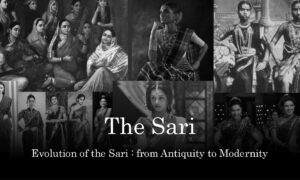









madelinecone
January 12, 2025 at 12:00 pm
An outstanding share! I’ve just forwarded this onto
a colleague who has been doing a little research on this.
And he in fact ordered me breakfast because I discovered it for him…
lol. So allow me to reword this…. Thanks for the meal!!
But yeah, thanks for spending some time to discuss this issue here
on your website.
TangGuifANg.dreAMhOSTers.COM
April 4, 2025 at 11:54 am
Way cool! Some extremely valid points! I appreciate you writing this article and the
rest of the website is really good.